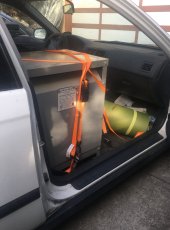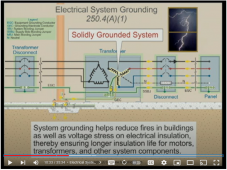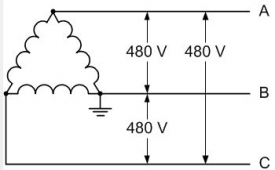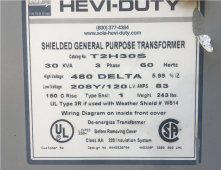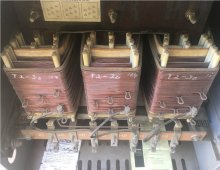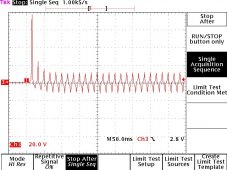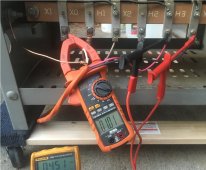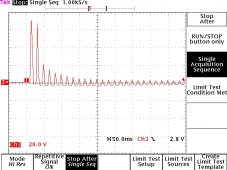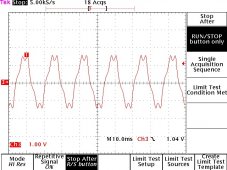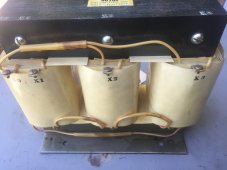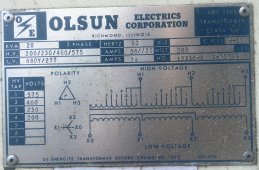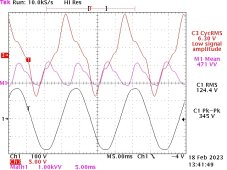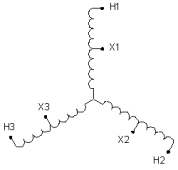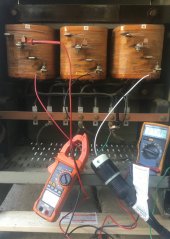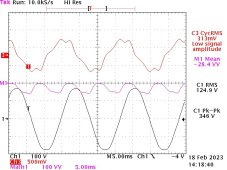Hedges
I See Electromagnetic Fields!
- Joined
- Mar 28, 2020
- Messages
- 20,694
Showing a work-in-progress assembling 3-phase SMA system.
3x SI-5048-US are configured for 3-phase and produce 120/208Y, rated 15 kW continuous.
Sunny TriPower 30000TL-US-10 is 480V delta (or 277/480Y), rated 30 kW.
TriPower combiner box will be used, but for now just one string being connected.
Battery bank will need to be upgraded. Starting out with 4x 12V 104Ah SunXTender AGM, 13 years old and 40% of capacity remaining.
Transformer needed to produce 480V. Three 9kVA toroids wired as auto-transformers, 120V to 260V (close enough to 277V for the TriPower to operate.)


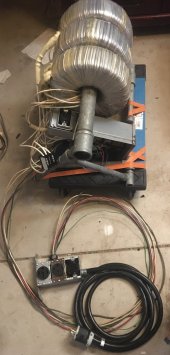
All the flying wires are obviously temporary, but good enough for lab work. Will need to be properly in cables or conduit when done. Just getting system functional before placing TriPower and Combiner box outside.
Plugs and sockets for 277/480V 4 wire + ground, and MC3 cables, allow swapping connections. Heavy stuff on dollies so they can be moved easily.
Until firmware of TriPower has been updated, it doesn't have proper UL-1741-SA option. But frequency-watts ramp is present, and just had to expand frequency range to allow that to work while remaining connected to Sunny Island. Shown below at 60.36 Hz, 242W. Sunny Explorer software on an old XP laptop and Speedwire provide control and monitoring. Tried RS-485 adapter with Sunny Web Box but only saw serial number, nothing else. SMA says Sunny Web Box does with with TriPower, so some firmware updates may be needed for that too (or maybe Web Box works through Speedwire? I haven't tried that.)
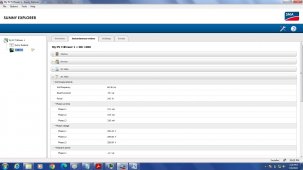
3x SI-5048-US are configured for 3-phase and produce 120/208Y, rated 15 kW continuous.
Sunny TriPower 30000TL-US-10 is 480V delta (or 277/480Y), rated 30 kW.
TriPower combiner box will be used, but for now just one string being connected.
Battery bank will need to be upgraded. Starting out with 4x 12V 104Ah SunXTender AGM, 13 years old and 40% of capacity remaining.
Transformer needed to produce 480V. Three 9kVA toroids wired as auto-transformers, 120V to 260V (close enough to 277V for the TriPower to operate.)



All the flying wires are obviously temporary, but good enough for lab work. Will need to be properly in cables or conduit when done. Just getting system functional before placing TriPower and Combiner box outside.
Plugs and sockets for 277/480V 4 wire + ground, and MC3 cables, allow swapping connections. Heavy stuff on dollies so they can be moved easily.
Until firmware of TriPower has been updated, it doesn't have proper UL-1741-SA option. But frequency-watts ramp is present, and just had to expand frequency range to allow that to work while remaining connected to Sunny Island. Shown below at 60.36 Hz, 242W. Sunny Explorer software on an old XP laptop and Speedwire provide control and monitoring. Tried RS-485 adapter with Sunny Web Box but only saw serial number, nothing else. SMA says Sunny Web Box does with with TriPower, so some firmware updates may be needed for that too (or maybe Web Box works through Speedwire? I haven't tried that.)




